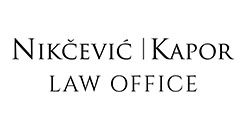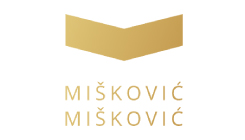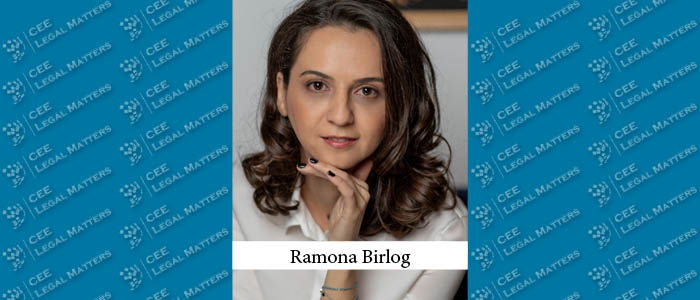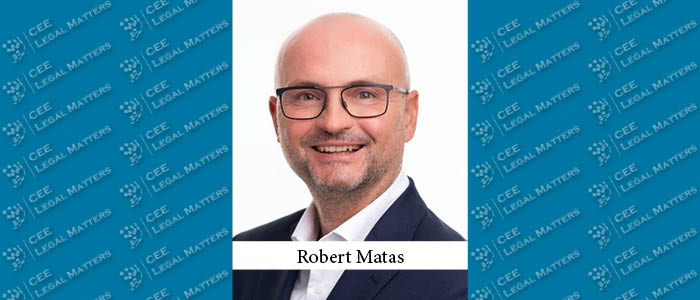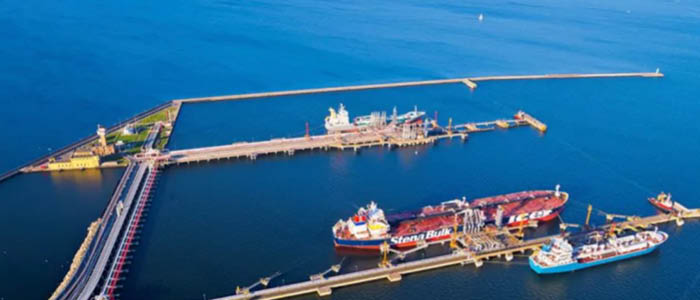The Deal: On March 20, 2017, CEE Legal Matters reported that Primus’s Tallinn office had advised BaltCap on its acquisition of 100% of Sanoma Baltics AS – the operator of the Estonian online classified sites auto24 and Kuldne Bors – from Sanoma Media Finland Oy. Sorainen advised Sanoma Media Finland, and Cobalt advised the management of Sanoma Baltics on the transaction, with Ellex Raidla advising AS LHV Varahaldus on its provision of financing for the transaction.
We reached out to several of the individuals involved in the deal for information.
The Players:
- Primus: Ermo Kosk, Partner: Counsel for BaltCap
- Sorainen: Pekka Puolakka, Partner: Counsel for Sanoma Media Finland
- Cobalt: Kristel Raidla-Talur, Partner: Counsel for Sanoma Baltics Management
- Ellex Raidla: Raino Paron, Partner: Counsel for LHV Varahaldus
CEELM: How did you each become involved in this matter?
Primus: I have been consulting BaltCap and its portfolio companies on numerous transactions and day-to-day matters for almost ten years. Our cooperation has been so far very smooth and productive, and the Sanoma Baltics’ transaction was yet another transaction we were selected to work on.
Cobalt: I acted for Ilta-Sanomat (Sanoma Group) in 2007 when its subsidiary Kuldne Bors (soon renamed Sanoma Baltics) acquired its first 20% stake in Autoportaal. At that time Autoportaal was the company operating the classified site of auto24 (which contained ads for cars and other vehicles) and Kuldne Bors was operating the classified site bearing its own name (which contained ads for a large variety of goods and products). Margus Tomberg was the CEO of Kuldne Bors and later, after the Sanoma Group had exercised its options to acquire further stakes in Autoportaal from the founders and management until it had acquired 100% of the company, also became the CEO of Autoportaal. Thereafter, Autoportaal was merged with Kuldne Bors (Sanoma Baltics).
I worked with Margus on the acquisition of auto24 back in 2007 and we have known each other since then. Funnily enough we also became neighbours in the same residential building in the center of Tallinn around the same time. I lost Margus as my good neighbour when my husband bought his apartment a few years later to cater to the needs of our growing family. Margus contacted me again about a year ago to discuss the potential acquisition of Sanoma Baltics and this was the beginning of our co-operation on this particular deal.
Sorainen: We have a long-term relationship with Sanoma Media Finland and we have assisted them in the past with various issues as well, including transactions.
Ellex: Ellex is known for its experience in M&A and B&F matters and specifically on work related to capital markets and corporate debt issues. LHV approached us with the request to provide legal advice on the financing of the transaction and on the bond issue. Our work on the matter started in February 2017.
CEELM: What, exactly, was the initial mandate when you were retained for this project?
Primus: When we first got involved with this project, BaltCap had just signed a non-confidentiality agreement with Sanoma Media Finland Oy. Thus, we were engaged from the very beginning of the process in order to do the due diligence and advise the client on the transaction structure.
The structure of the transaction was a bit more complicated than usual, as there were several counterparties to the transaction. The initiative to buy [Sanoma Baltics AS] actually came from the management of AS Sanoma Baltics (now auto24 AS) and BaltCap was engaged by them as a strategic investor. Additionally, as the parties needed external financing for the acquisition, relations with an external creditor had to be structured. Ultimately the external financing came from the pension funds of AS LHV Varahaldus, which provided financing through a note issue, which again is not the usual practice in Estonia.
So the transaction did not just cover the acquisition transaction with Sanoma Media Finland Oy, but also included the regulation of internal relations between the purchasers – BaltCap and the management of the target company – and relations with the external financer and the security agent.
Cobalt: When we first got involved, Sanoma was in the middle of an auction process. We gave some guidance to the management as they were in an uncomfortable position, wishing to acquire the company in co-operation with a private equity fund and at the same time presenting the company, with Sanoma, to several other bidders. We also discussed potential funding structures, shareholder relations, and management agreements going forward.
Sorainen: Our mandate was to provide legal assistance in carrying out the divestment.
Ellex: We advised the pension fund management company LHV Varahaldus as the investor and helped the issuer as their client to organize an issue of unsubordinated and subordinated bonds that could be then purchased by pension funds managed by LHV Varahaldus to finance a buy-out of Sanoma Baltics AS by the management and BaltCap. The transaction set a precedent and helped to develop the Estonian capital market by creating an instrument enabling Estonian pension funds to invest in Estonia (generally, there is a demand for securities issued by local issuers among Estonian pension funds). Our work included preparing the bond terms, collateral agreements, and collateral agent agreements, as well as participating in choosing the collateral agent and representing the client in negotiating the agreements.
CEELM: Who were the members of your team, and what were their individual responsibilities?
Primus: The head of the team was me, and I was the person ultimately responsible for the negotiations and preparation of transaction documents with all counter-parties. The other team members were Counsel Toomas Kasesalu who advised on the financing part of the transaction and helped with carrying out the legal due diligence; Senior Associate Sandra Vark, who managed the legal due diligence process, assisted with the preparation of acquisition documents and agreements with the management, and prepared the merger notice regarding the transaction for the Competition Authority; Senior Associate Dmitri Rozenblat, who assisted with the legal due diligence; and Associate Marilin Laud, who assisted with the legal due diligence and preparation of the merger notice.
Cobalt: Senior Associate Triin Ploomipuu was the main task force working on all aspects of the transaction with me. We tried to keep the team small and efficient and involved other associates for very limited tasks only.
Sorainen: I was the Supervising Partner. Counsel Paul Kunnap was primarily responsible for handling the case. Associates Olga Vijard and Mirjam Vichmann and legal assistant Katlin Robas were involved in various roles in completing the transaction as well.
Ellex: I worked with Senior Associates Helen Metsar and Martin Maesalu as a team.
CEELM: Please describe the final agreement in as much detail as possible: How was it structured, why was it structured that way, and what was your role in helping it get there?
Primus: The agreement with Sanoma Media Finland Oy was a share purchase agreement with customary provisions on conditions precedent, closing procedure, parties’ representations and warranties, liability clauses, and non-compete and confidentiality obligations. The purchaser under the agreement was a special purpose vehicle ultimately owned by BaltCap Private Equity Fund II SCSp and the management of AS Sanoma Baltics (now auto24 AS).
But as I mentioned above, the deal did not just cover the agreement with Sanoma Media Finland Oy; it also included agreements between the purchasers and financing and security agreements. My role was to advise on the most efficient set-up of the different parts of the transaction.
Cobalt: We worked on all aspects of the deal. The priority for the management was negotiating the investment and financing documentation with BaltCap. Accordingly, we spent most of our resources on relevant documentation and negotiations. However, as the deal between BaltCap and the management was related to the acquisition of the company from Sanoma Group and additional financing provided by LHV pension funds, we also assisted the management in reviewing relevant documentation.
Sorainen: From the vendor’s side the transaction was a share deal with many typical MBO features. There were also some issues which were particular to the case due to specific [and confidential – ed.] circumstances related to the target company.
Ellex: BaltCap was not a direct party to the financing structure developed and documented by Ellex Raidla. Financing was provided to a project company indirectly owned by Baltcap and the management of Sanoma Baltics. Security interests for the bonds were provided by upstream project companies, including one owned by Baltcap’s fund.
CEELM: What was the most challenging or frustrating part of the process?
Primus: As there were a lot of counterparties involved in the transaction, the most challenging part of the process was to ensure that all aspects of the legal relations between the different counterparties would be covered and that all transaction documents were duly and timely prepared. There was real time pressure before the closing, because we got the official merger approval just two days before the closing date.
Cobalt: I think for us and the management the most difficult task was going through all the “what if” scenarios. What if growth is not as expected? What if there is a default under one agreement, potentially triggering negative consequences under other agreements? What if someone is not able to continue in the management team? As lawyers we also went through the usual closing challenges, trying to make everything happen at the same time. But I would not call any of that frustrating in this particular deal.
Sorainen: Unfortunately, during the negotiations, the Estonian government began considering whether to institute a new car tax in Estonia or not. Instead of developing a policy and then sticking to it, the government made several announcements about the upcoming tax only to withdraw them later, creating a lot of uncertainty to all involved. Given that such a tax could have an impact on the business of the target company, the government’s public vacillation on the subject caused a need for a lot of additional negotiations to take the possibility into account. Since then the government has dropped this plan.
Ellex: Although the project was innovative – to our knowledge it was the first time bonds were specifically issued to finance an M&A transaction in Estonia – there was no frustration in the project. Habitually bond issues are driven more by the issuer, not the investor.
CEELM: Was there any part of the process that was unusually or unexpectedly smooth?
Primus: Although obtaining merger approval just two days before the closing was on the one hand a challenge, on the other hand the merger process with the Competition Authority itself went very smoothly. According to law the Competition Authority has 30 days to conduct the merger proceedings, but we managed to get the merger approval in approximately two weeks. As we wanted the closing to take place at the beginning of a month, if we had received merger approval just a day later, we would have had to postpone the closing by a month.
Cobalt: I think the closing dinner went well. (laughs). On a more serious note, I believe the whole process was quite smooth for a complex transaction such as this one. Of course at times the parties felt a bit stuck with various items subject to negotiations, but overall the process was quite smooth, especially as regards negotiations between the management and BaltCap. I believe there was a good match which allows us to believe that parties will also be successful in growing the company as one team.
Sorainen: All parties were professional and acted in a professional manner and the transaction process ran very smoothly with the exception of the disruptions inserted by the government’s announcements I mentioned above.
Ellex: By the time our work started, our client and the acquirers had a relatively clear idea about the financing conditions which needed to be implemented into the terms and conditions of the bonds and related security documents. The good preparation naturally made the process quite smooth.
CEELM: Did the final result match your initial mandate, or did it change somehow from what was initially anticipated?
Primus: Our general mandate stayed the same – to conduct the legal due diligence, help to negotiate the transaction structure, prepare and negotiate the transaction documents, assist with the performance of conditions precedent (i.e., prepare and submit the merger filing) and closing process, and take care of post-closing issues.
The structure of the deal changed somewhat during the initial phase of the negotiations. The primary changes concerned the financing of the transaction and the set-up of the holding companies of the purchasers.
Cobalt: Our initial mandate was “any assistance the management may need.” At the time it was not clear what the financing structure would look like, who would be the private equity partner, and so on. So our scope of work was subject to constant change, but we did not mind; it was an interesting journey and very pleasant co-operation with the management team.
Sorainen: Yes.
Ellex: The final result at large matched our initial mandate.
CEELM: What individuals at your clients directed you, and how did you interact with them?
Primus: We worked mainly with Oliver Kullman, one of the partners at AS BaltCap. During the most intense period of negotiations we communicated with him almost daily, either by phone or e-mail. Additionally, from time to time we had internal meetings face-to-face. Oliver is always very hands-on with his projects and likes to review all major transaction documents, but at the same time he trusts our legal expertise and does not interfere with purely legal matters.
Cobalt: Margus Tomberg was our main point of contact [at Sanoma Baltics] and, as usual these days, most of the communication was by phone and email. We also met on several occasions with the entire management team (four people) to go through drafts and discuss our comments. The management also had a financial advisor who was present in these meetings. I enjoyed working with the team. It was impressive that the whole team went through all transaction documents in detail and contributed to the discussion. I think it set a strong base for business going forward as the entire management team has a good overview of the terms agreed with BaltCap.
Sorainen: The project was directed by Sanoma’s M&A Director and in-house counsel. We were in contact mostly by telephone as they are based in Helsinki, but there were also some in-person meetings. The communications were often improved by the ability to keep the internal talks in Finnish.
Ellex: Kelli Valdek (Compliance), Maido Lillemets (Legal), and Romet Enok and Kristo Oidermaa (Portfolio managers).
CEELM: How would you describe the working relationship with your counterparts at the other firms working on the deal?
Primus: The working relationship with both Sorainen, the representative of the seller, and Cobalt, the representative of the management, was efficient and friendly. Mostly we communicated by phone or e-mail, but we also had a few meetings in person.
I believe we all shared a common goal to get the deal done with all parties being satisfied, so we were all reasonable and willing to make compromises if needed. Most of the biggest issues during the negotiations concerned commercial matters, and not legal ones, which we managed to agree on pretty smoothly.
Cobalt: We had a very good working relationship with Primus. It was not the first transaction we both worked on and I’ve always considered them reasonable and efficient. No reason to change my mind based on this deal.
We had less interaction with Sorainen as negotiations with Sanoma were mostly handled by BaltCap and Primus.
Sorainen: Our interactions were limited to Primus. Most details were ironed out in local counsels-only meetings held in person. Larger commercial issues were negotiated in telephone conferences, and there were a couple of negotiation sessions in person in Helsinki. We were very pleased by the professional attitude and the no-nonsense manner in which we could carry out the process.
Ellex: The whole process lasted for more than a quarter. Communication was mainly performed via e-mail, but also included some meetings in the most intensive stage of the negotiations regarding the bond documentation.
CEELM: How would you describe the significance of the deal to Estonia?
Primus: I guess the most outstanding part of the deal is that the acquisition was financed by local pension funds through a note issue. Usually acquisition transactions in Estonia are externally financed with bank loans.
Cobalt: First of all, it should be noted that both auto24 and Kulne Bors are very well-known brands in Estonia; the sites have an extremely wide user base and even people who have never used the services themselves are likely to know the brands.
Another important aspect is that the deal was financed by strong local players. While BaltCap has been in the private equity business for many years, the financing provided by LHV pension funds was possible only due to recent legislative changes.
I believe it is good for both the business and users that the company was acquired by the management together with a private equity investor such as BaltCap. It enables the company to concentrate on developing new and innovative solutions for the benefit of its customers. Several media companies were also among the bidders and their strategies would have likely been different.
Sorainen: The transaction was one of the largest of its type this year in Estonia (note that given the size of Estonia there are not that many large transactions). The target company is also the clear market leader in its business. So the transaction has significance purely on those terms. Otherwise, the company will continue under the same management and there presumably will not be significant changes to the business. Given the smooth transaction process, it will also, hopefully, serve to develop the transactional legal practice in Estonia by a small increment.
Ellex: This was the first time in Estonia when pension funds invested in an instrument for financing of an M&A transaction to such a large extent.
This Article was originally published in Issue 4.8 of the CEE Legal Matters Magazine. If you would like to receive a hard copy of the magazine, you can subscribe here.




